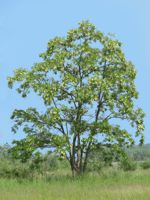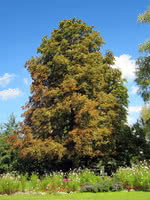Mon-Fri 9am - 5pm Mountain time
Horse Chestnut vs Black Locust
Robinia pseudoacacia
Aesculus hippocastanum
CUSTOM GROW
Black Locust is an attractive tree. Its distinctive leaves are made of about a dozen bright green leaflets. It also notable for its fragrant white flowers, which smell of citrus.
Black Locust can grow in many situations, but prefers dry areas with lots of sun. It is robust and is an excellent choice for establishing shade in dry, open areas.
Important note: Much of the Black Locust is toxic to humans and livestock, including seeds, bark, and leaves.
Horse Chestnut is a medium sized deciduous tree that is native to Greece but has been grown in North America for hundreds of years. It produces large nuts.
A top CO2 absorbing species. Experts think this tree may help climate change more than others.
Black Locust Quick Facts
Horse Chestnut Quick Facts
Toxicity: most parts of plant are toxic

